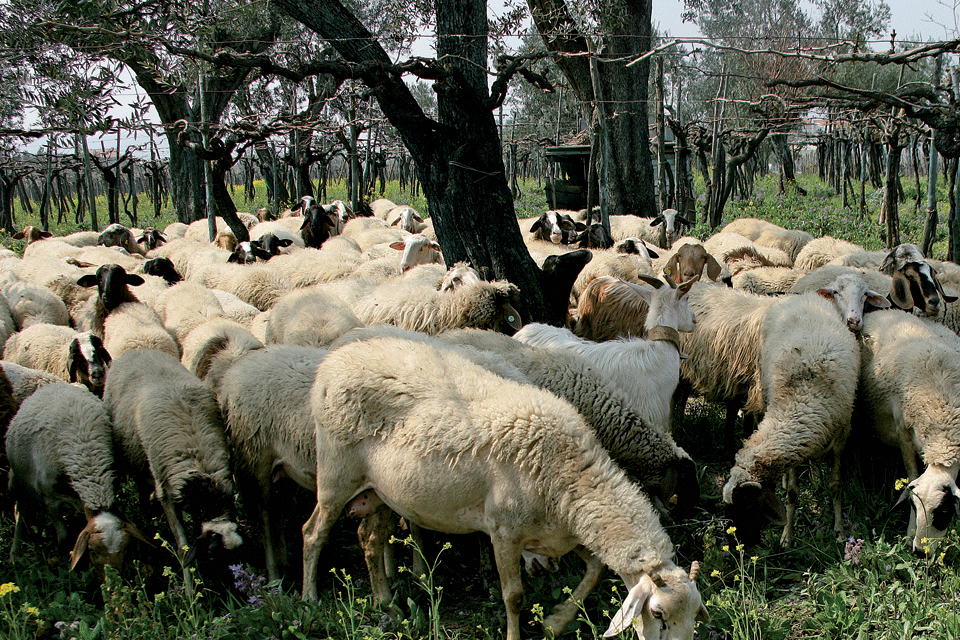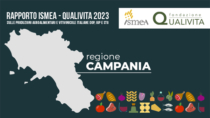Description
The Irpinia PDO is reserved for the following types of wine: White, Red, Rosé, White Spumante, Red Spumante, Rosé Spumante and Novello;, White Passito, Red Passito and Liqueur (only with specification of grape variety). The Designation also incorporates numerous grape variety and one geographical specification.
Production Area
The production area of Irpinia PDO is within the entire territory of the Province of Avellino, in the Campania region.
Description of product typologies
Irpinia PDO Bianco is straw-yellow, varying in intensity; the nose displays sensations of fruit such as apple, melon and hazelnut, with vegetal notes of aromatic herbs; the flavour is determined by a tart-sapid balance, smoothness and long persistence. Irpinia PDO Spumante Bianco is straw-yellow, varying in intensity and at times with greenish or golden reflections, and has a fine, persistent perlage; it is light, ample and complex on the nose; it is light on the palate, harmonious in the types of wine ranging from dossagio zero (no added sugar) to sweet. Irpinia PDO Rosso is ruby red, varying in intensity; the nose is reminiscent of the fruity and floral notes; it is dry or mouth-filling on the palate, balanced and characteristic. Irpinia PDO Spumante Rosso is ruby red, varying in intensity, with fine, persistent foam; it is light, ample and complex on the nose; it is light on the palate, harmonious in the types of wine ranging from dossagio zero (no added sugar) to sweet. Irpinia PDO Rosato is pink, varying in intensity; the nose is floral and fruity; it is dry or mouth-filling on the palate, smooth and pleasant. Irpinia PDO Spumante Rosato is pink, varying in intensity, and has a fine, persistent perlage; ; it is light, ample and complex on the nose; it is light on the palate, harmonious in the types of wine ranging from dossagio zero (no added sugar) to sweet. Irpinia PDO Novello is crimson red; the nose is intense, vinous and fruity; it is intense and dry or slightly sweet on the palate. Irpinia PDO Passito Bianco and Irpinia PDO Passito Rosso with specification of grape variety have the organoleptic properties that are typical of the grapes and terroir of origin. Irpinia PDO Spumante Bianco, Irpinia PDO Spumante Rosso and Irpinia PDO Spumante Rosato wines must be obtained through secondary fermentation in the bottle (Classic Method) or natural secondary fermentation in autoclaves (Charmat Method). Sparkling wines made with the Classic Method cannot be released for consumption before 18 months after October 1st of the year in which the most recent batch of grapes were harvested.
Geographical and sub-area specifications
The Irpinia PDO can be accompanied by the geographical sub-designation Irpinia PDO Campi Taurasini, reserved exclusively for Red wine made with a minimum of 85% Aglianico, pure or with the addition of similarly-coloured grapes originating from other grape varieties suitable for cultivation in the concerned area, max. 15%. Irpinia PDO Campi Taurasini wines can be released for consumption from September 1st of the year following that in which the grapes were produced.
Grape variety specifications
The Irpinia PDO may display the following grape variety specifications. From white grape varieties: min. 85% Coda di Volpe, Falanghina (incl. Spumante, Passito), Fiano (incl. Spumante, Passito), Greco (incl. Spumante, Passito), Aglianico (incl. Spumante), pure or with the addition of similarly-coloured grapes originating from other grape varieties suitable for cultivation in the concerned area, max. 15%. From red grape varieties: min. 85% Aglianico (incl. Spumante, Passito, Liqueur), Sciascinoso, pure or with the addition of similarly-coloured grapes originating from other grape varieties suitable for cultivation in the concerned area, max. 15%. The characteristics of the colour, fragrances and flavour of each specification are those typical of the grape variety and terroir of origin. Passito, Falanghina Passito, Greco Passito and Aglianico Passito must be made with grapes which have been partially dried on the vines or after the harvest, until the alcohol level is no less than 15.5% vol. They can be released for consumption from June 1st of the year following that in which the grapes were produced.








